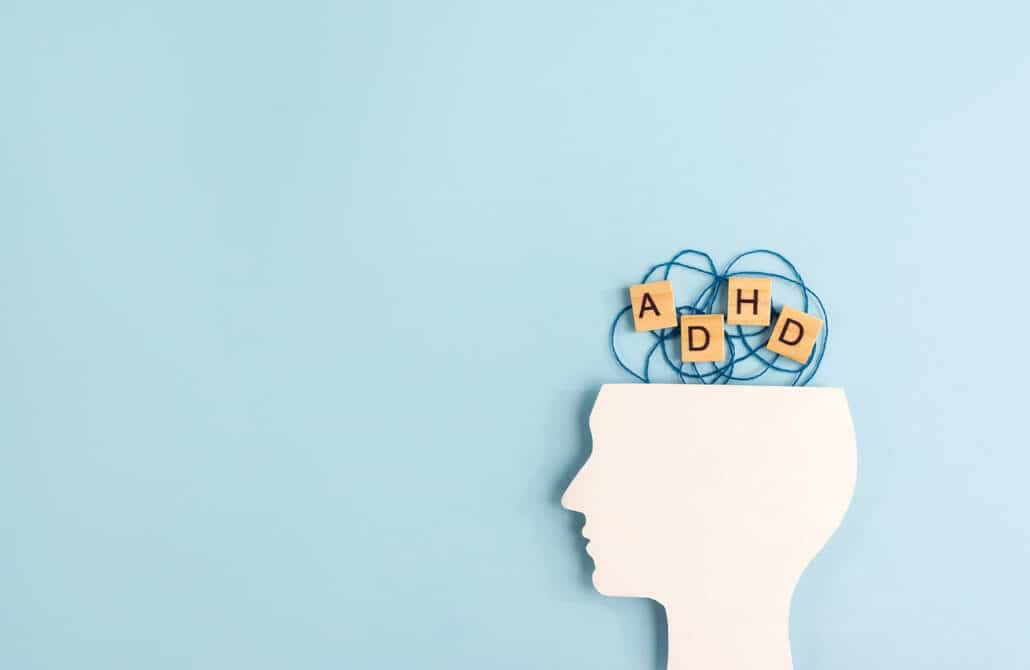According to a 2020 survey from the Substance Abuse and Mental Health Services Administration, more than 3% of the population had misused a stimulant in the past year.[1] More than 30% of those individuals used prescription stimulants.[1] A considerable number of people who misused stimulants also reported misusing multiple types of them. One of the common prescription stimulants that people misuse today is Vyvanse. Since the pandemic, illegal and prescription drug misuse has been growing. It is important to understand what Vyvanse is, how it works, why it is addictive and what to do to treat stimulant addiction.
Table of Contents
- 1 What Is Vyvanse?
- 2 How Does Vyvanse Work?
- 3 Side Effects of Vyvanse
- 4 What Are the Dangers of Vyvanse?
- 5 Symptoms of Vyvanse Abuse
- 6 Signs That Someone Has a Vyvanse Addiction
- 7 Effects of Vyvanse Abuse
- 8 Long-Term Effects of Vyvanse Abuse
- 9 Treatment for Vyvanse Addiction
- 10 Find Vyvanse Addiction Treatment Near Long Island
What Is Vyvanse?
The generic name for Vyvanse is lisdexamfetamine dimesylate. It is a central nervous system stimulant and a prescription amphetamine.[2] Vyvanse was approved by the Food and Drug Administration and was released in 2007, and it is a Schedule II controlled substance because of its high potential for abuse.[3] The medication is commonly used to treat attention deficit hyperactivity disorder and binge eating disorder.[4] When used to treat ADHD, the medication is only one component of a larger holistic treatment approach. This typically involves therapy and other supportive treatments.

How Does Vyvanse Work?
Vyvanse alters brain chemical balance to boost dopamine and norepinephrine levels.[5] Both chemicals occur naturally in the body. Dopamine stimulates rewarding or pleasurable feelings, and norepinephrine is a stimulant. For ADHD, the medication may improve a patient’s ability to concentrate and not fidget. Also, it can reduce hyperactivity and impulsiveness.[5]
With patients who take it for binge eating disorder, the drug may balance neurotransmitters to help reduce binge eating episodes.[4] However, professionals stress that it is not a weight loss medication since it comes with multiple risks.[4] Vyvanse is an oral medication, and patients typically take it once per day.[2]
Side Effects of Vyvanse
The common side effects of Vyvanse may appear without misusing the medication. According to the FDA, there are several potential side effects.[2] These are some common examples:
- Irritability
- Nausea or vomiting
- Upper belly pain
- Decreased appetite
- Dizziness
- Weight loss
- Dry mouth
- Sleep problems
There are some side effects that are less common but are considered serious.[2] These are some serious side effects:
- Seizures
- Blurred vision
- Eyesight changes
- Slowed growth in children
Seizures are more likely to affect patients who have a history of them.[2] However, any serious side effects require immediate medical attention.
What Are the Dangers of Vyvanse?
Drugs that alter brain chemicals can affect parts of the brain that are responsible for life-sustaining functions.[6] Since Vyvanse increases dopamine levels, it creates pleasurable feelings. The brain uses dopamine as a way to identify positive behaviors that are beneficial to survival. For example, eating food produces dopamine and is necessary for survival. Because of how dopamine and the brain work, it is easy to form habits or have strong urges to continue actions that are connected to dopamine production.[6]
When drugs are involved, these effects lead to the brain producing fewer neurotransmitters to compensate. As a result, the person needs the substance to continue functioning normally and craves it. When someone becomes dependent on a substance, there is a higher potential for abuse.[6] Misusing a drug can lead to an increased tolerance, which means that a person needs more to feel the same effect. Eventually, a person can become addicted. This is when someone cannot stop taking a substance even though the person knows the negative effects and may be suffering through them.[7]
The FDA also specifies several serious risks associated with using Vyvanse.[2] In addition to addiction, these are some possible dangers of taking the drug:
- New psychological problems
- Increased blood pressure
- Increased heart rate
- Elevated risk of stroke, heart attack or sudden death

Symptoms of Vyvanse Abuse
People who are taking Vyvanse may wonder if they are becoming addicted. It is important to know the symptoms, which are things a person can feel or identify by experience. When using Vyvanse becomes a habit, it is often a sign of dependency.[8] These are some common symptoms of Vyvanse abuse:
- Much more energy than usual
- Feeling shaky, uneasy or nervous
- Difficulty sleeping
- Excessive sweating
- Crashing when Vyvanse wears off
- Feeling clumsy or uncoordinated
- Mood swings
- Loss of appetite
- Abdominal pain
- Feeling an inflated sense of self
A Vyvanse crash may come with an increased appetite, muscle aches, agitation, depression and tiredness.
Signs That Someone Has a Vyvanse Addiction
A friend or family member of someone who is taking Vyvanse may also notice changes that could signify dependency or addiction.[8] People who are addicted to a substance often do their best to cover up any changes they notice in themselves. Some people who are dependent on a substance may be in denial that they have a problem. These are some potential signs that someone is addicted to Vyvanse:
- Seems more energetic or talkative
- Dilated pupils
- Skin redness and visible sweating while at rest
- Mood swings
- Secretive behavior
- Unusual clumsiness
- Noticeable personality changes
- New financial or legal problems
- Withdrawal from social activities
- Demonstrating less regard for others
Effects of Vyvanse Abuse
Vyvanse affects multiple systems in the body.[10] Misusing it can lead to unpleasant experiences. These are some common effects of misuse:
- Sleeping problems or disruptions
- Weight loss
- Mental status changes
- New and persistent digestive problems
- Palpitations
- Shortness of breath
- Dizziness or fainting
- Chest pain
Call 911 for someone who faints has chest pain or experiences sudden shortness of breath.
Long-Term Effects of Vyvanse Abuse
According to clinical trial data from the FDA, the effects of Vyvanse use for long-term treatment beyond four weeks are still not fully known.[2] Because of this, the agency recommends that doctors closely monitor patients who take it for longer than a few weeks. However, there have been reports of adults using or misusing Vyvanse for prolonged periods and developing stimulant-induced psychosis.[9] Since Vyvanse can negatively impact cardiovascular health, permanent heart problems can also be a long-term effect of misuse. Additionally, some people with preexisting mental health issues may notice that symptoms worsen. Heart attack and stroke risks increase with Vyvanse abuse as well.

Treatment for Vyvanse Addiction
When someone becomes addicted to stimulants, it is necessary to seek professional treatment. In comparison with the rewards produced by normal activities like eating, the effects drugs create are much more pronounced. They are comparable to the difference between shouting into a microphone and whispering.[6] Since the brain becomes accustomed to the increase, it produces fewer reward circuit neurotransmitters.[6] Removing the substance can come with unpleasant physical and psychological effects, and people need professional treatment to break an addiction to Vyvanse. Professional treatment includes several phases.
Intervention
Although some people voluntarily seek treatment, others need an intervention to incentive them. Loved ones usually plan these events with the help of a professional interventionist. The interventionist assists in writing impact statements, suggesting consequences and more.
Detox
For some people, withdrawal may be dangerous. Supervised detox is ideal for people who are addicted to stimulants. During detox, cravings are stronger, and people are more likely to relapse if they try to detox on their own. Since symptoms can be physically uncomfortable, medical professionals can provide medications that help ease some of the effects.
Addiction Treatment
Treatment may involve an inpatient or outpatient structure. Recommendations depend on the individual’s health history, living situation, and more. During treatment, therapists use cognitive behavioral therapy and other approaches to help people learn about behavior causes or triggers and find ways to change behaviors or cope with triggering situations. For those with co-occurring mental health issues, there is also a type of therapy that addresses both the mental health issue and addiction. This is called dual diagnosis treatment.
Recovery
After inpatient or outpatient treatment, most professionals recommend 12-step meetings or other supportive group therapy structures. In addition to increasing accountability, being part of a group can give people a place to receive and give support to others who struggle with addiction.

Find Vyvanse Addiction Treatment Near Long Island
If you or someone you know is struggling with stimulant addiction, Long Island Interventions can help. We connect you with valuable intervention, detox and addiction treatment services that fit your needs. Please contact us to learn more about Vyvanse addiction treatment near you.
References
[1] https://www.samhsa.gov/data/report/2020-nsduh-annual-national-report
[2] https://www.accessdata.fda.gov/drugsatfda_docs/label/2007/021977lbl.pdf
[3] https://www.accessdata.fda.gov/drugsatfda_docs/nda/2007/021977s000TOC.cfm
[4] https://www.webmd.com/drugs/2/drug-148324/vyvanse-oral/details
[5] https://www.healthline.com/health/adhd/vyvanse-effects-on-the-body
[6] https://nida.nih.gov/publications/drugs-brains-behavior-science-addiction/drugs-brain
[7] https://www.mayoclinic.org/diseases-conditions/drug-addiction/symptoms-causes/syc-20365112
[8] https://www.verywellmind.com/vyvanse-addiction-signs-symptoms-and-treatment-5213811
[9] https://www.ncbi.nlm.nih.gov/pmc/articles/PMC2670101/
[10] https://www.healthline.com/health/adhd/vyvanse-effects-on-the-body

